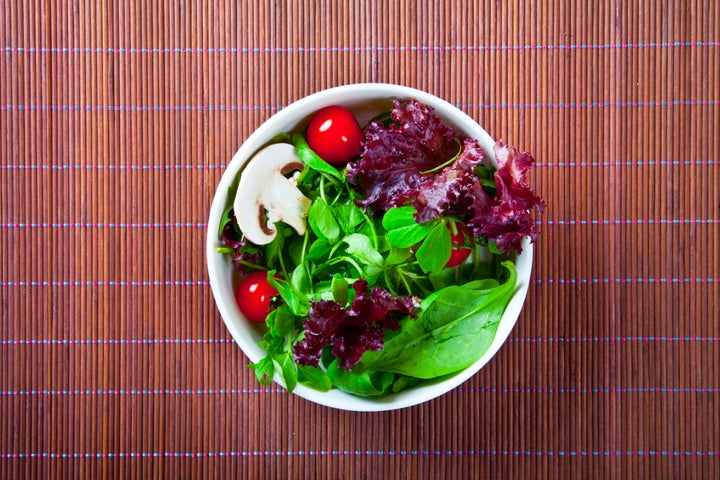If you’re always hungry, then the latest diet trend to sweep the nation might just be for you.
Unlike the 5:2 diet which involves eating normally for five days and fasting for two, the 5:5:5 diet is about eating five small meals every single day.
According to UK nutritionist Angela Dowden, creator of the diet, it can help users lose up to five pounds in a fortnight.
The diet focuses heavily on eating plenty of fruit and vegetables (at least five portions a day), with a special emphasis on high fibre, low calorie greens.

What Is It?
Writing a piece about the diet for Woman’s Own back in 2016, Angela Dowden said: “The science behind our 5:5:5 is very simple – it’s about eating more (at least five portions daily) of healthy fruit and veg - particularly high fibre, low cal greens– that fill you up and help keep you trim.
“It’s also about having regularly spaced meals and snacks every day to keep hunger at bay. These healthy eating principles help lower risk of heart disease and cancer and boost energy levels too.”
According to Dowden, those who follow the eating plan can lose up to 5lbs in two weeks. However she notes that this is “only likely in people who have a greater amount to lose.”
How To Do It
:: Have breakfast, lunch and dinner daily (choose from some of Dowden’s suggestions below or create your own), along with two small snacks per day.
:: Each meal should, ideally, contain at least 80g of fruit and veg.
:: Have 300ml of skimmed milk or calcium-fortified almond milk daily, which can be used in teas or coffees or as a drink.
Breakfast Ideas
:: Top steamed spinach with a poached egg, a tablespoon of ready-made reduced fat hollandaise sauce and a spoon of grated cheddar.
:: One small slice of wholemeal bread topped with 30g soft cheese and two sandwich slices of smoked salmon, followed by a bowl of berries.
:: 40g unsweetened fruit nut muesli topped with a chopped apple and two tablespoons of 0% fat Greek yoghurt.
Lunch Ideas
:: Wholemeal pitta filled with three tablespoons of reduced fat hummus and half a grated carrot. 100g chopped mango.
:: Half a can of baked beans on a small slice of wholemeal toast, with three slices of avocado.
:: Pasta salad made with four tablespoons of cooked whole wheat pasta, 60g reduced fat mozzarella, seven halved cherry tomatoes, ½ a chopped red pepper and one tablespoon of guacamole (used as a dressing).
Dinner Ideas
:: Stir fry a chopped chicken breast with red pepper, pak choi and broccoli florets. Sprinkle with chilli flakes and soy sauce to taste, serve with 125g fresh egg noodles.
:: Spaghetti bolognese made with 100g extra lean minced beef, half a chopped red and half a chopped yellow pepper, 150g tomato and basil sauce. Add a sprinkle of paprika and serve with whole wheat spaghetti (50g dry weight).
:: Grilled white fish, served on a bed of steamed spinach and leeks (sautéed in a brush olive oil) with a teaspoon of pine nuts to garnish, followed by a bowl of fruit salad.
Snacks (x2 per day)
:: Handful of berries with 100g 0% fat Greek yogurt
:: Two kiwi fruits
:: Two slices of Parma ham wrapped around two slices of melon
:: Handful of peanuts and raisins
:: Banana
:: 30g feta and a 5cm chunk of cucumber
:: An apple and a satsuma
Pros And Cons
Aisling Pigott, dietitian and BDA spokesperson, said it’s “good to see an approach which focuses on what you can have” rather than what you can’t.
“Focusing on regulating meal times and appetite, instead of starving or restricting, fits with evidence based practice,” she added.
“Any approach which promotes fresh fruit and veg has positive health benefits and take-home messages.”
On the contrary, she did add that “prescriptive approaches often see results in the short term, but rarely deal with long-term lifestyle changes”.
“Diets don’t address our relationship with food and can often polarise food as ‘healthy’ or ‘unhealthy’, instead of ensuring we enjoy and appreciate it,” she concluded.